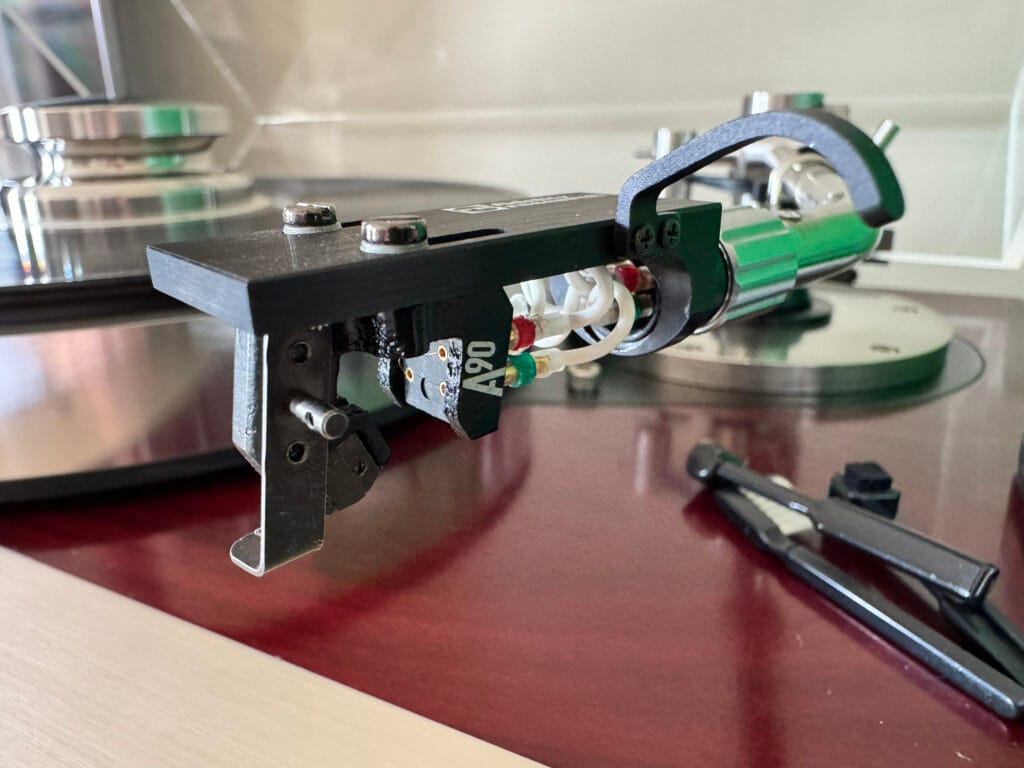Hell, yeah!
Everything in the signal path and attached to a cartridge makes a difference. Materials and construction improve as one spends more on headshells, wires and mounting hardware. This translates to better detail retrieval and micro-resolution. Naturally, the higher your system resolution, the more noticeable these differences will be, which is why I focus on improving system resolution as an overall concept.
Wire
If you are spending decent money on a cartridge, you ought to put it on a decent headshell, with premium wires and have it perfectly aligned. I’ve found headshell wiring to be especially important and currently use SME silver headshell wires. They are the best I’ve found out of trying various Litz, 99.9999.% pure copper, and other wires I’ve tried.
Silver wire is generally a game-changer wherever you use it, but it is costly. Other wires work well too, like Ortofon’s silver wires, Jelco’s Litz wires and some Audio Technica wires. I can supply basic wires that work very well, through to high-end wires, whatever you might like to use with your deck.

Headshells
I always suggest using the best headshell you can afford and ensuring that it matches the mass of the tonearm and the range of cart/headshell weight that your arm can support. Headshells are made from a variety of materials, some of them good and some not so good.
Ideally, you want materials that have a high stiffness-to-mass ratio and that can be perfectly accurately machined. This is why various alloys of aluminium and magnesium are commonly used and excellent materials for the job. Wood, on the other hand, cannot be precisely machined at these dimensions and has a poor stiffness-to-mass ratio. It is, therefore, a rather silly material for a headshell, better for a guitar, but popular with hipsters.
Want to see what the best headshells are made of? Find some of the best headshells from the golden age of vinyl and see if you find a wooden one…
Fasteners
Fasteners and even the rubber gaskets at the headshell/tonearm interface are important, and all of them contribute to the final result. There are two common materials for the fasteners: aluminium alloy and stainless steel. The materials have different densities, and so fasteners of the same dimensions will have different masses.
This becomes important when looking at headshell mass and cartridge-tonearm matching. Part of my precision turntable setup process involves assessing the fasteners and replacing them with types better-optimised for the turntable and tonearm in question.
Structural Stuff
The general condition of the fixings, arm-headshell interface, turntable feet, miscellaneous screws, fasteners, cable dress, nearby equipment, etc all play a part in overall performance, so these things should be considered. Likewise, the record-turntable interface is important, which is why I recommend a quality peripheral record clamp and central collet or mass-style clamps.
Advice
Good advice ties all this together. There is so much pseudoscience and misinformation in the turntable space. Many are new to turntables, and by new, I mean less than 10 years of experience. Many so-called specialists and retailers have only surface-level turntable knowledge, certainly nothing even approaching what I’m proud to be able to offer. Many turntables are hobbled by poor cartridge-tonearm matching, poor headshell, wires and fasteners, and of course, poor setup and calibration.
Discover more from LiQUiD AUDiO
Subscribe to get the latest posts sent to your email.
